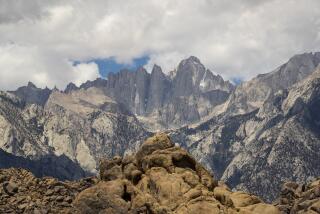Early Winter Seen as Factor in ’12 S. Pole Deaths
AUCKLAND, New Zealand — Pioneering British polar explorer Robert Falcon Scott and his team of four adventurers might have survived their doomed trek to the South Pole had it not been for a freak early winter, an American scientist said Friday.
Scott and his companions, who sought to become the first to reach the South Pole, died on their way back from their failed trek in 1912.
Norwegian explorer Roald Amundsen beat the British, who found that he had planted his flag at the pole.
“It was terrible luck. In any other year out of about 14 they would have made it, but they hit a remarkably early winter,” said Dr. Susan Solomon, an ozone expert at the Boulder, Colo., office of the National Oceanic and Atmospheric Administration.
The atmospheric scientist was in Auckland for a meeting of the Intergovernmental Panel of Climate Change, the United Nations’ climate advisory body. The meeting ended Thursday.
Solomon said data collected over the past 20 years suggest that Scott’s expedition hit temperatures between February and March that were 15 degrees to 25 degrees colder than normal.
“The frigid conditions alone weren’t responsible for their deaths,” she said. “But the unusually cold temperatures substantially contributed to the tribulations Scott and his team faced during the final stages of their battle for survival.”
Scott’s party, ill-equipped for the terrible Antarctic cold, lost its way and died of exhaustion and cold only a few miles from a food depot and within striking distance of its base on the Antarctic coast.
More to Read
Sign up for Essential California
The most important California stories and recommendations in your inbox every morning.
You may occasionally receive promotional content from the Los Angeles Times.










